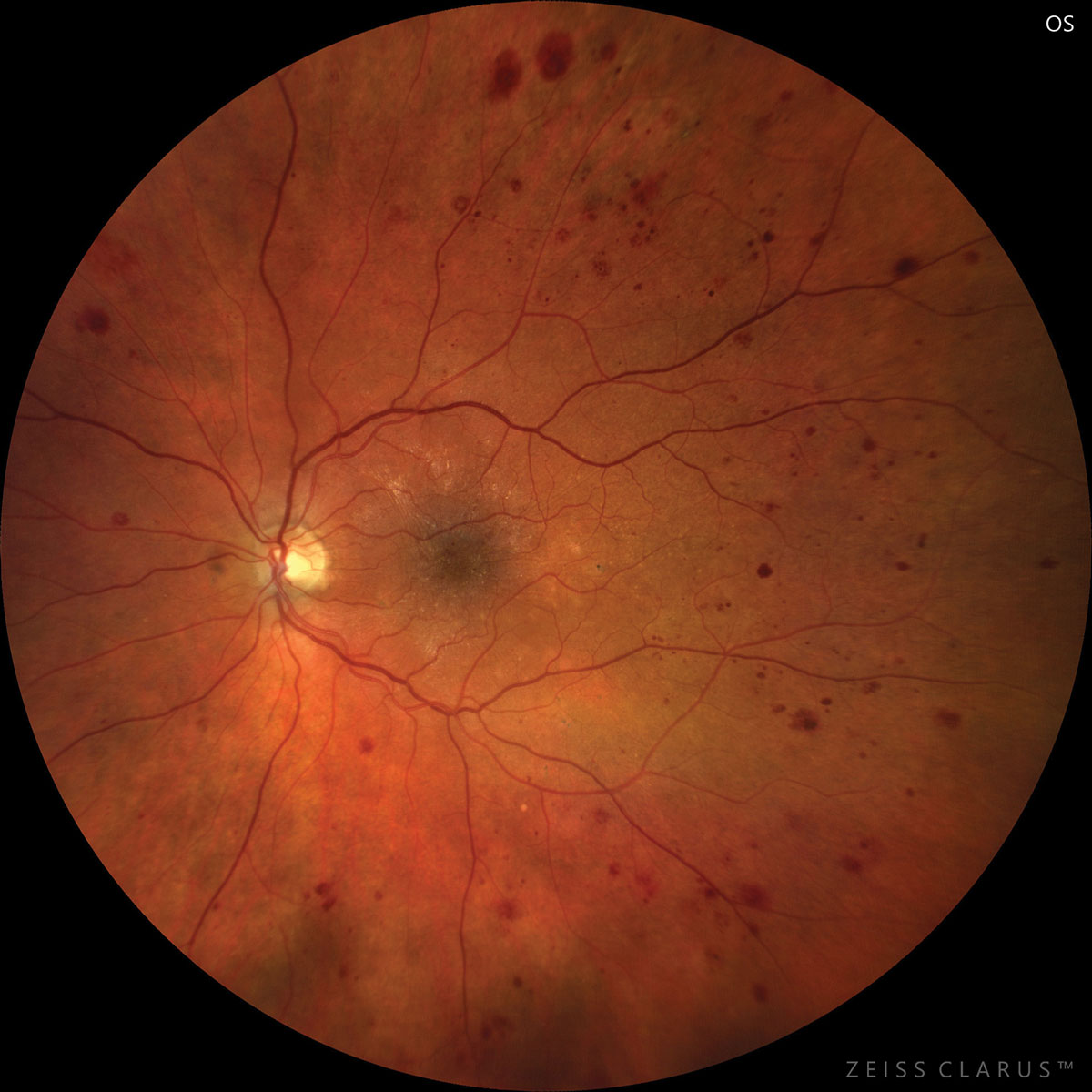 |
| Patients with diabetic retinopathy—particularly in the earliest stages—should be educated about preventive measures that can help reduce their risk of experiencing severe cardiovascular incidents. Photo: Jay Haynie, OD. Click image to enlarge. |
A recent study identified diabetic retinopathy (DR) as an independent marker of cardiovascular disease (CVD) among adults with type 1 diabetes, and increasing risk was observed for higher levels of DR. Inversely, the study authors also reported that individuals with CVD had a greater risk of developing DR in the upcoming five years.
In this longitudinal registry-based matched case-cohort study, 16,547 adults with type 1 diabetes, who were registered in the Danish Registry of Diabetic Retinopathy were identified. The researchers age- and sex-matched each case with five non-diabetes individuals (n=82,399). Odds ratios and hazard ratios were estimated for incident and upcoming CVD via multivariable models.
Patients included in the study had a median age of 44.5 years and 57.6% were male. Adults with type 1 diabetes were more likely to have prevalent cardiovascular disease and develop cardiovascular disease within five years vs. their counterparts without diabetes. Correspondingly, the study authors found that adults without diabetic retinopathy were less likely to develop CVD.
The presence of CVD was higher among cases at the time of the first DR screening (odds ratio 1.29), the study noted. Data also revealed that adults with type 1 diabetes had an increasing risk for incident cardiovascular disease for higher levels of diabetic retinopathy, as follows:
• DR level 1: CVD odds ratio = 1.35
• DR level 2: CVD odds ratio = 1.71
• DR level 3: CVD odds ratio = 2.00
• DR level 4: CVD odds ratio = 2.19
“In conclusion, results from this nationwide matched case–cohort study indicate DR as a useful marker of CVD in type 1 diabetes with increasing risk demonstrated for higher levels of DR. Likewise, CVD also independently predicted upcoming DR,” the study authors wrote in their Acta Ophthalmologica paper.
“As we have now demonstrated a longitudinal and dose-response connection between the severity of DR and upcoming risk of CVD in an entire national cohort, future studies might address, if early preventive intervention might alleviate the risk in high-risk patients and if results would also apply for persons with type 2 diabetes.”
Mabala DS, Stokholm L, Andersen N, et al. Diabetic retinopathy as an independent marker of cardiovascular disease in type 1 diabetes: Results from a nationwide longitudinal matched case–cohort study. Acta Ophthalmol. February 12, 2024 [Epub ahead of print]. |

